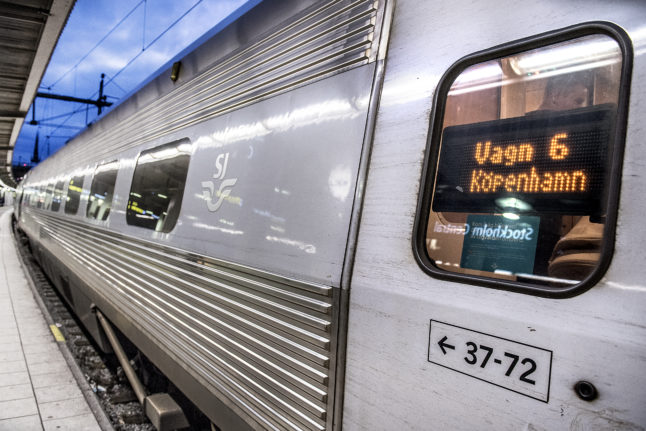“There are a lot of people who want to travel by train,” press communications officer Jonas Olsson from state-owned train company SJ told The Local.
“We saw that after restrictions opened up, there was a demand we’ve never seen before.”
Olsson said that the train company are not sure why demand has increased, but said it was “really great” that demand is so high.
“We’re not sure what the reason is,” he said.
“It could be an increase in interest after the pandemic, it could be the sustainablility aspect, we’ve not really got to the bottom of it.”
Swedes have for a number of years shown interest in more environmentally-friendly modes of transport, with the term flygskam or “flight shame”, a feeling of guilt over the environmental impacts of flying, first gaining popularity in 2018.
Flight chaos hitting Europe’s airports this summer has also had a possible positive effect on train bookings in Sweden this year, as more travellers choose to avoid the queues and travel by train.
Why don’t train companies just put more trains in service?
Unfortunately, it’s not that simple.
“It’s not that easy to just put more trains on the line,” Olsson said.
“Planning trains takes a long time. We have to apply for a permit from the Transport Agency, so we work on a year-long cycle.”
“We’ve also had a difficult summer with regard to our staff situation,” he said, referring to train driver shortages which have plagued the company in recent months.
“So, for a number of reasons, we haven’t been able to have as many trains running as we would like.”
Olsson does not believe that this high demand is going to drop any time soon, despite the fact that most Swedes are now back to work after their summer holidays.
“We think it’s probably going to be the opposite, that demand will keep increasing,” he said.
“So, I don’t think there will be more tickets in the future.”
SJ are taking measures to meet this high demand, he said, despite the company having to plan a year in advance.
“We’ve said we’re going to hire a thousand more staff this year, and that’s because we want more train drivers and more onboard staff so we can put more trains on our routes.”
How can I get hold of a train ticket if I want to travel?
Despite high demand, it’s not impossible to get hold of tickets, even on high-pressure routes like the Malmö to Stockholm line.
“There are still tickets available, if you plan a little bit in advance you can still get tickets,” Olsson said.
“So they’re not completely sold out all the time, but you should keep that in mind – if you’re travelling by train on this route, you should try and plan in advance if you want to get hold of the cheaper tickets.”
“Our ticket model is formed in a way that we have tickets released at short notice – last minute tickets,” Olsson explained.
“The closer you get to departure, the more expensive they get. You can travel today or tomorrow, but then you’ll be paying a lot more so close to departure.”
“There’s really high demand. It’s really great, truly.”
Is there high demand on other routes, or is it just affecting the Malmö-Stockholm line?
“Stockholm to Malmö is one of our major routes,” Olsson said, “so obviously there are a lot of people travelling there and a lot of demand there.”
“There’s more demand on Stockholm-Malmö than, for example, Stockholm-Gothenburg, but we’re seeing more people travelling across the whole network, on all our routes, really.”
Demand for international train travel has also gone up, again possibly as a result of flight cancellations and queues at Europe’s airports.
“We opened a new route in autumn which goes from Stockholm to Hamburg, that also goes through Malmö, it’s a night train going through Europe,” Olsson said.
“We’ve seen a lot of people wanting to take that route. People really want to travel by train, which is really great.”



 Please whitelist us to continue reading.
Please whitelist us to continue reading.
Member comments